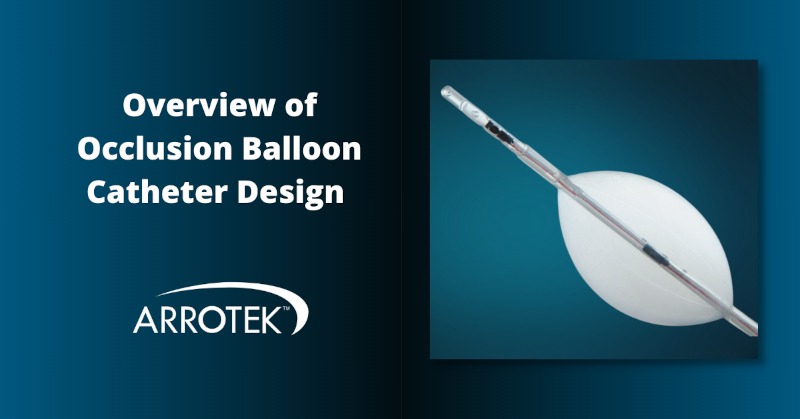
Occlusion balloon catheters are widely used for a range of medical procedures and treatments, from emergency haemorrhage control or the treatment of neurovascular aneurysms, to temporarily stopping the flow of blood during heart surgery. Despite the varied applications that currently exist, there continues to be new innovations in occlusion balloon catheter design.
Those innovations are improving the treatment of patients, including in highly complex surgeries where the catheter must reach parts of the body through tortuous vasculatures.
When going through an occlusion balloon catheter design and development process, there are several important factors to consider.
Balloon Inflation and Deflation
The process to inflate and deflate the balloon is essential to the performance of an occlusion balloon catheter. In most cases, the aim is to minimise inflation and deflation times to reduce the overall time it takes to perform the procedure. For some applications, maximum visibility and high contrast levels are also a requirement.
Minimal inflation and deflation time is often achieved with advanced guidewire technology running along the full length of the balloon
That said, inflation and deflation time isn’t the only factor, as the process of inflating and deflating the balloon must remain controlled.
Trackability
Optimising trackability is often a core performance requirement. It is typically achieved through a range of design strategies, including using different materials along the delivery wire for the balloon.
The objective is usually to achieve the right balance between pushability at the proximal end and flexibility at the distil end.
Device Stability
As mentioned above, it is important to have fast inflation and deflation, but those processes have to be controlled, as a crucial performance requirement of an occlusion balloon catheter is that the device remains stable throughout the procedure.
The design might also need to ensure wall and balloon apposition occurs as quickly as possible.
For example, device stability and rapid wall apposition enhance procedures such as the balloon-assisted coiling of neurovascular aneurysms. These performance characteristics can also provide added protection to patients during the same procedure in the event of an aneurysm rupturing.
Catheter Profile, Shaft Design, and Performance Characteristics
Getting a balance of performance characteristics for the new catheter is an essential part of the design process. In terms of the catheter profile, for example, many modern applications of occlusion balloon catheters require the catheter profile to be as small as possible, including as low as 3Fr, or even sub-3Fr.
For the catheter shaft, there is often a need for braid and/or coil reinforcement as well as performance characteristics that suit the specific application, i.e., pushability, kink resistance, etc.
The length of the catheter is also important, as it must suit the application, especially in relation to the access point. Longer occlusion balloon catheters offer multiple access point options.
Type and Size of Balloon
Does the application call for a compliant, semi-compliant, or non-compliant balloon? What is the required diameter of the balloon? These are examples of the types of questions that need to be answered.
Take balloon diameter as an example, as you can have a diameter as low as 3mm for applications like endovascular coiling procedures for brain aneurysms, or as much as 32mm for haemorrhage control procedures in trauma situations or where there is a tear of the SVC.
Ease of Use
Ease of use is sometimes an overlooked design characteristic of catheters and other minimally invasive medical devices, but it is often important. It can be of high importance for occlusion balloon catheters, especially when the device is designed to be used in emergency procedures.
To ensure ease of use, the design engineer will optimise preparation time for the device, including by minimising the number of steps that are required.
Application Suitability
The occlusion balloon catheter design process has to take into account the intended usage applications of the new device. It is also important to go into detail, including the locations in the body where the device will be used.
Speak to An Engineer
At Arrotek, we have extensive experience in the design and development of a wide range of advanced catheter devices. This includes occlusion balloon catheters. If you have an idea for a new device and would like to speak to one of our engineers in the strictest confidence, please get in touch with us. Complete the form below and we’ll get back to you.

